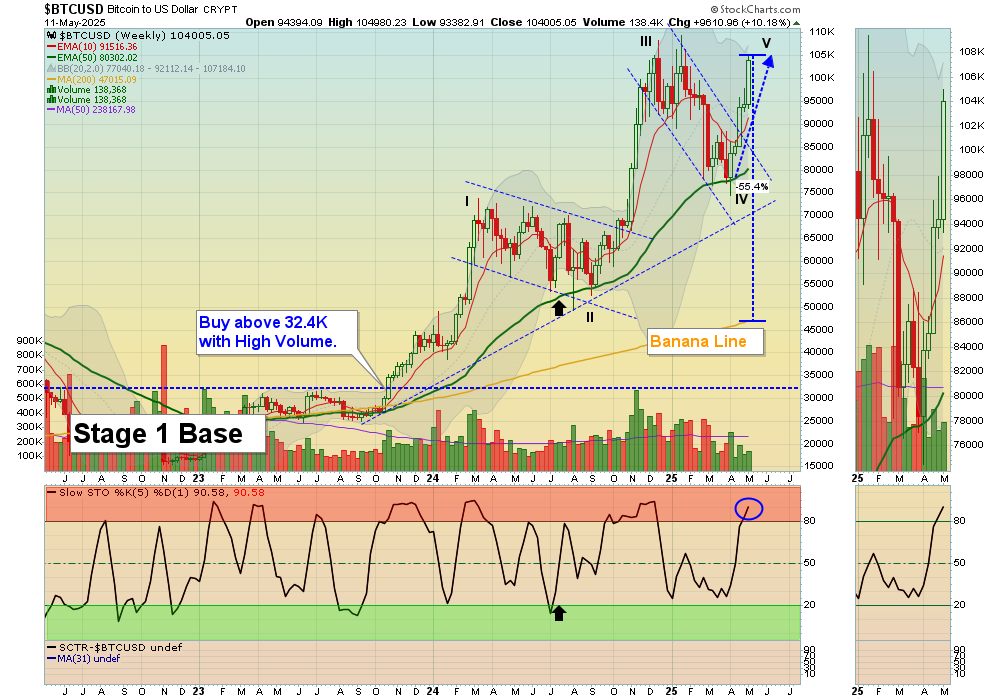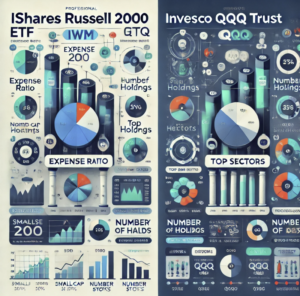
By ATGL
Updated March 23, 2025
In the vast world of investing, index funds stand out as a beacon of simplicity and efficiency, drawing in both novice and seasoned investors. With their primary goal of mimicking the performance of a specific index, index funds offer a unique blend of low-cost, diversified investment. These funds have gained immense popularity due to their appealing characteristics, including low expense ratios, diversification, and minimal management requirements.
As you embark on your investment journey, it is crucial to understand the variety of index funds available, each tailored to different market segments such as US stocks, international stocks, and bonds. From the Vanguard S&P 500 ETF and Schwab S&P 500 Index Fund to innovative options like the Fidelity ZERO Large Cap Index, the choices are vast and varied, each offering distinct benefits and investment strategies. For investors seeking global diversification, the FTSE All-World Index Series offers broad exposure to both developed and emerging markets across the globe. For those interested in New Zealand’s equity market, the S&P NZX 50 Index tracks the performance of the country’s top publicly listed companies. More importantly, key factors such as expense ratios and fund ratings should be part of your decision-making process to maximize the potential of index investing.
This article will guide you in exploring the top eight index funds worth considering, delve into why these funds have become so popular, and outline the advantages they present. We will also provide valuable insights into different investment vehicles, such as ETFs and mutual funds, and assist you in making informed investment decisions. Discover how these investment powerhouses can become a cornerstone in building your financial future.
What are the Best Index Funds to Invest in?
Index funds are popular among investors because they offer a mix of low costs and diversification. These funds aim to mirror the performance of a specific market index, providing a passive way to match the market’s returns over time. Many investors choose index funds due to their low expense ratios and ease of access. They are often seen as a reliable strategy for long-term growth as they capture the comprehensive performance of large market segments, such as the S&P 500. When deciding on the best index funds, consider factors like expense ratios, fund ratings, and minimum investment requirements.
Vanguard S&P 500 ETF (VOO)
The Vanguard S&P 500 ETF (VOO) is a top choice for many investors looking for U.S. equity exposure. It tracks the S&P 500 Index, which includes 500 of the largest U.S. companies. VOO uses a full replication strategy, holding all stocks in the index in equal proportions. As of 2025, VOO has a low expense ratio of 0.03%, making it a cost-effective option. Its liquidity is unmatched, with an average daily trading volume of 6.2 million shares. With assets nearing $1.2 trillion, VOO is one of the world’s premier index funds.
Schwab S&P 500 Index Fund (SWPPX)
The Schwab S&P 500 Index Fund (SWPPX) stands out with its exceptionally low expense ratio of 0.02%. This means you only pay a tiny amount annually, keeping your investment costs down. One of the significant benefits is that there’s no minimum investment required. This allows anyone to start investing, regardless of budget. SWPPX closely follows the S&P 500’s performance, delivering returns that mirror the index. In 2022, SWPPX mirrored the S&P 500’s performance with an 18% loss, reflecting the index’s downturn at that time. It is easily accessible through the Schwab platform or most online brokers.
Invesco QQQ Trust ETF (QQQ)
The Invesco QQQ Trust ETF (QQQ) is an attractive choice for those intrigued by growth-oriented investments. QQQ tracks the performance of non-financial companies in the Nasdaq-100 Index. Since its inception in 1999, this ETF has proven to be a top performer in the large-cap growth category. With an expense ratio of 0.20%, QQQ offers a reasonable cost for its impressive returns. Its focus on technology and growth companies makes it a good option for investors seeking exposure to innovative sectors. The fund’s past performance highlights its potential as a sound investment for future growth.
Fidelity ZERO Large Cap Index (FNILX)
Fidelity ZERO Large Cap Index Fund, or FNILX, is notable for its innovative fee structure. Unlike many other funds, FNILX comes with a zero expense ratio. This means your investments grow without the drag of additional fees. FNILX tracks a broad range of over 500 U.S. large-cap stocks, performing similarly to an S&P 500 index fund. Not requiring a minimum investment, FNILX is great for new investors. Fidelity avoids paying expensive licensing fees to S&P Global by not being labeled an official S&P 500 fund. This makes it a unique and cost-effective option for investors seeking broad market exposure.
SPDR S&P 500 ETF Trust (SPY)
The SPDR S&P 500 ETF Trust (SPY) has long been a staple in the ETF market. Founded in 1993, SPY is one of the pioneers of the ETF industry. It tracks the S&P 500 Index and is sponsored by State Street Global Advisors. With its vast size, SPY has managed to accumulate hundreds of billions in assets. Its expense ratio is 0.095%, keeping it affordable for long-term investors. SPY’s broad coverage of U.S. large-cap stocks and low fees make it widely popular. Investors trust SPY for its consistent returns and accessibility through brokerage firms.
iShares Core S&P 500 ETF (IVV)
The iShares Core S&P 500 ETF (IVV) is a cost-effective option for investors prioritizing low expenses. Part of a top-rated group of index ETFs, IVV features a modest expense ratio of 0.03%. This ETF provides investors with a straightforward way to invest in an expansive selection of U.S. stocks. IVV is easily accessible for buying shares through brokerage accounts. By keeping its management fees minimal, the fund helps investors focus on growth and not costs. Choosing IVV can provide stability in a diversified portfolio designed for longevity.
Vanguard Russell 2000 ETF (VTWO)
The Vanguard Russell 2000 ETF (VTWO) offers exposure to smaller U.S. companies. By tracking the Russell 2000 Index, VTWO includes about 2,000 small-cap stocks. This makes it ideal for investors looking to diversify away from large-cap sectors. VTWO invests in sectors like industrials, financials, and healthcare, among others. Its expense ratio of 0.07% ensures that investors don’t pay a premium for accessing small-cap growth potential. Despite recent struggles in the small-cap sector, VTWO remains a key player for those looking to engage with this dynamic market segment.
Vanguard Total Stock Market ETF (VTI)
The Vanguard Total Stock Market ETF (VTI) is one of the broadest funds available for U.S. stocks. It tracks an index that covers all U.S. stock sizes, providing comprehensive market exposure. VTI is cost-effective, with an expense ratio of just 0.03%. Despite its small fee, the fund offers extensive diversification by covering a wide range of stocks. VTI emphasizes a low-cost, passive investment strategy, making it an ideal choice for those wanting a long-term diversified portfolio. By investing in VTI, you tap into the entire U.S. stock market.
Why Are Index Funds Such a Popular Option?
Index funds are a popular choice among investors for several reasons. They offer broad diversification by providing ownership in a large number of stocks. This reduces the risk compared to investing in individual stocks. By tracking major indices like the S&P 500, they give investors exposure to key market sectors. Although these indices don’t guarantee profits each year, they have a history of strong returns over the long term.
The structure of index funds makes them simple to manage. They automatically adjust their holdings to mirror the performance of the index, removing the need for active management. This approach is cost-effective, as passive investment strategies lead to lower expense ratios.
Ideal for long-term goals like retirement, index funds help minimize costs while maximizing growth potential. Features like low expense ratios, automatic index replication, and broad market exposure make them appealing to investors seeking simplicity and efficiency.
Key Benefits of Index Funds:
- Low cost
- Broad diversification
- Passive management
- Long-term growth potential
In summary, index funds simplify investing while providing reliable performance, making them a favored option for many looking to build wealth over time.
What Are the Benefits of Investing in Index Funds?
Investing in index funds offers numerous benefits for both novice and seasoned investors. First and foremost, they provide diversification. By investing in a single index fund, you gain exposure to a range of companies and sectors, spreading risk across the market.
One of the key advantages is the low cost. Index funds tend to have lower fees because they are passively managed, unlike actively managed funds. This cost-effectiveness can significantly boost your returns over time.
You don’t need to be a market expert to invest in index funds. These funds aim to replicate the performance of major indices like the S&P 500, making them an easy choice for anyone seeking alignment with market trends.
Additionally, index funds simplify investing with features like automatic dividend reinvestment and dollar-cost averaging. For those seeking lower-risk options or a place to park cash temporarily, money market funds offer stability and liquidity, though with more modest returns compared to index funds. This means your investment can grow steadily without constant oversight.
Here’s a quick look at some benefits:
- Diversification: Wide exposure across companies.
- Low Fees: Cost-efficient investment strategy.
- Simplicity: No need for extensive market knowledge.
- Long-Term Growth: Aligns with general market trends.
Overall, index funds offer a straightforward path to accumulate wealth over the long term by riding the historical upward trajectory of the financial markets.
FAQs About Index Funds
Are index funds a good investment? Index funds are popular because they track market indexes and provide diversification. They have low fees, often around 0.05%, and need little to no minimum investment. This makes them an ideal choice for new investors.
What is considered a good expense ratio? A good expense ratio for an index fund is typically under 0.20%. Lower fees mean more of your money is working for you rather than being used to pay the fund manager.
What are the big 3 index funds? The big three index funds are often considered to be the Vanguard Total Stock Market ETF, Fidelity Nasdaq Composite Index Fund, and the S&P 500 Index Fund. They offer broad market exposure and low costs.
Is it best to invest in an index mutual fund or an ETF? ETFs typically have lower transaction fees but can incur trading costs. Mutual funds might suit those looking for simplicity with a single purchase. Both have tax implications to consider.
What if I invested $100 a month in S&P 500? Investing $100 monthly in the S&P 500 could lead to substantial growth over time, thanks to compounding returns and the broad market exposure of the index.
Make Informed Investment Decisions with Above the Green Line
When investing, understanding different options is key. Index funds, like those recommended by Above the Green Line, offer a smart way to achieve long-term growth. These funds mirror existing market indexes, providing exposure to various sectors and asset classes. They’re known for their low costs due to passive management. This makes them attractive compared to actively managed funds.
Benefits of Index Funds:
- Low Fees: Manageable for any investor.
- Diversification: Spread investments across many stocks.
- Simplicity: Easy to understand and invest in.
Index funds come in two main forms: ETFs and mutual funds. ETFs trade like stocks, offering flexibility. Mutual funds offer set trading times and are great for long-term holdings. The main difference between ETFs and mutual funds lies in how they are traded—ETFs are bought and sold throughout the day on exchanges, while mutual funds are only priced and traded at the market close.
Considerations:
- Tracking Errors: Differences in fund vs. index performance.
- Fund Types: Choose between ETFs and mutual funds based on your strategy.
Platforms like brokerage accounts or robo-advisors make it simple to start investing in index funds. Whether you’re a beginner or a seasoned investor, these funds provide a solid foundation for growing your portfolio over time. Join Above the Green Line today and learn more.






